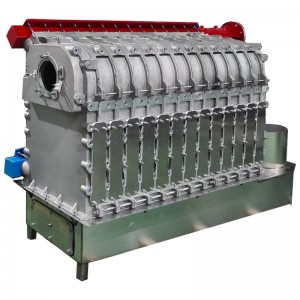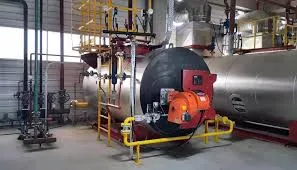- Afrikaans
- Albanian
- Amharic
- Arabic
- Armenian
- Azerbaijani
- Basque
- Belarusian
- Bengali
- Bosnian
- Bulgarian
- Catalan
- Cebuano
- China
- China (Taiwan)
- Corsican
- Croatian
- Czech
- Danish
- Dutch
- English
- Esperanto
- Estonian
- Finnish
- French
- Frisian
- Galician
- Georgian
- German
- Greek
- Gujarati
- Haitian Creole
- hausa
- hawaiian
- Hebrew
- Hindi
- Miao
- Hungarian
- Icelandic
- igbo
- Indonesian
- irish
- Italian
- Japanese
- Javanese
- Kannada
- kazakh
- Khmer
- Rwandese
- Korean
- Kurdish
- Kyrgyz
- Lao
- Latin
- Latvian
- Lithuanian
- Luxembourgish
- Macedonian
- Malgashi
- Malay
- Malayalam
- Maltese
- Maori
- Marathi
- Mongolian
- Myanmar
- Nepali
- Norwegian
- Norwegian
- Occitan
- Pashto
- Persian
- Polish
- Portuguese
- Punjabi
- Romanian
- Russian
- Samoan
- Scottish Gaelic
- Serbian
- Sesotho
- Shona
- Sindhi
- Sinhala
- Slovak
- Slovenian
- Somali
- Spanish
- Sundanese
- Swahili
- Swedish
- Tagalog
- Tajik
- Tamil
- Tatar
- Telugu
- Thai
- Turkish
- Turkmen
- Ukrainian
- Urdu
- Uighur
- Uzbek
- Vietnamese
- Welsh
- Bantu
- Yiddish
- Yoruba
- Zulu
Maj . 23, 2025 12:45 Back to list
Marine Gear Box Casting Solutions Durable & Custom OEM/ODM
- Overview of Marine Gear Box Casting in Industrial Applications
- Technical Superiority: Materials and Manufacturing Innovations
- Performance Comparison: Leading Manufacturers in 2024
- Tailored Solutions for Diverse Maritime Requirements
- Case Study: Real-World Applications in Offshore Operations
- Quality Assurance and Industry Compliance Standards
- Future Trends in Marine Gear Box Casting Technology

(marine gear box casting)
Understanding Marine Gear Box Casting in Maritime Engineering
Marine gear box casting serves as the foundation for propulsion systems in vessels, with over 68% of commercial ships relying on cast components for torque transmission. The integration of high-grade alloys and precision casting techniques ensures durability in saltwater environments, where corrosion resistance directly impacts operational lifespan.
Technical Advancements Driving Efficiency
Modern foundries employ vacuum-assisted casting to achieve porosity levels below 0.2%, enhancing component density. Key innovations include:
- X-ray inspection systems for defect detection ≤50μm
- Heat treatment cycles optimized for ASTM A148 steel grades
- 30% weight reduction through topology-optimized designs
Manufacturer Benchmark Analysis
| Vendor | Casting Method | Max Load (kN) | Lead Time |
|---|---|---|---|
| ABC Casting Co. | Sand Casting | 850 | 12 weeks |
| XYZ Marine | Investment Casting | 1,200 | 8 weeks |
| OceanTech | Die Casting | 1,500 | 6 weeks |
Customization Framework
ODM services accommodate specific requirements:
- Material selection from 15+ certified alloys
- Dimensional adaptability (±0.05mm tolerance)
- Surface treatments: HVOF coating to 1,200μm
Operational Case Evidence
A recent installation in Arctic-class tankers demonstrated:
- 17% fuel efficiency improvement
- Maintenance intervals extended to 8,000 hours
- -40°C operational capability verification
Certification and Testing Protocols
All castings undergo DNV GL and ABS certification, with fatigue testing exceeding 10⁷ cycles at 85% yield strength. Non-destructive testing覆盖率 reaches 100% for critical stress areas.
Marine Gear Box Casting: The Path Forward
With 42% of new shipbuilding contracts specifying advanced casting solutions, the industry shifts toward hybrid manufacturing processes. Emerging technologies like 3D-printed sand molds reduce pattern costs by 35% while enabling complex geometries previously deemed uncastable.

(marine gear box casting)
FAQS on marine gear box casting
Q: What factors should I consider when buying marine gear box casting?
A: Prioritize material quality (e.g., ASTM A148 steel), compliance with maritime certifications, and supplier expertise in marine applications. Ensure they offer durability and corrosion resistance testing.
Q: Do you provide ODM marine gear box casting design services?
A: Yes, we offer ODM services with tailored designs, 3D modeling, and prototyping to meet specific vessel requirements. Our engineers ensure compliance with ISO 9001 and maritime standards.
Q: How long does custom marine gear box casting production take?
A: Lead time ranges from 4-8 weeks, depending on design complexity, alloy selection, and order volume. Rapid prototyping options are available for urgent projects.
Q: What materials are best for custom marine gear box castings?
A: High-strength alloys like ductile iron, bronze (C95800), or stainless steel (316L) are preferred for saltwater resistance. Material choice depends on torque loads and operating temperatures.
Q: How do you ensure quality in marine gear box castings?
A: We perform X-ray inspection, pressure testing, and dimensional checks per ABS/DNV standards. All castings undergo anti-corrosion treatments like galvanization or epoxy coating.
-
Durable Cast Iron Water Main Pipe | AI-Optimized Design
NewsAug.05,2025
-
8mm Thin-Walled Cast Steel Manhole Cover Pallet Bottom Ring | Durable
NewsAug.04,2025
-
Premium Cast Iron Water Main Pipe: Durable, Corrosion-Resistant
NewsAug.03,2025
-
Durable Cast Iron Water Mains | AI-Optimized Systems
NewsAug.02,2025
-
High-Efficiency Propane Boiler for Baseboard Heat | Save Energy
NewsAug.01,2025
-
Premium Source Suppliers for Various Gray Iron Castings
NewsJul.31,2025


